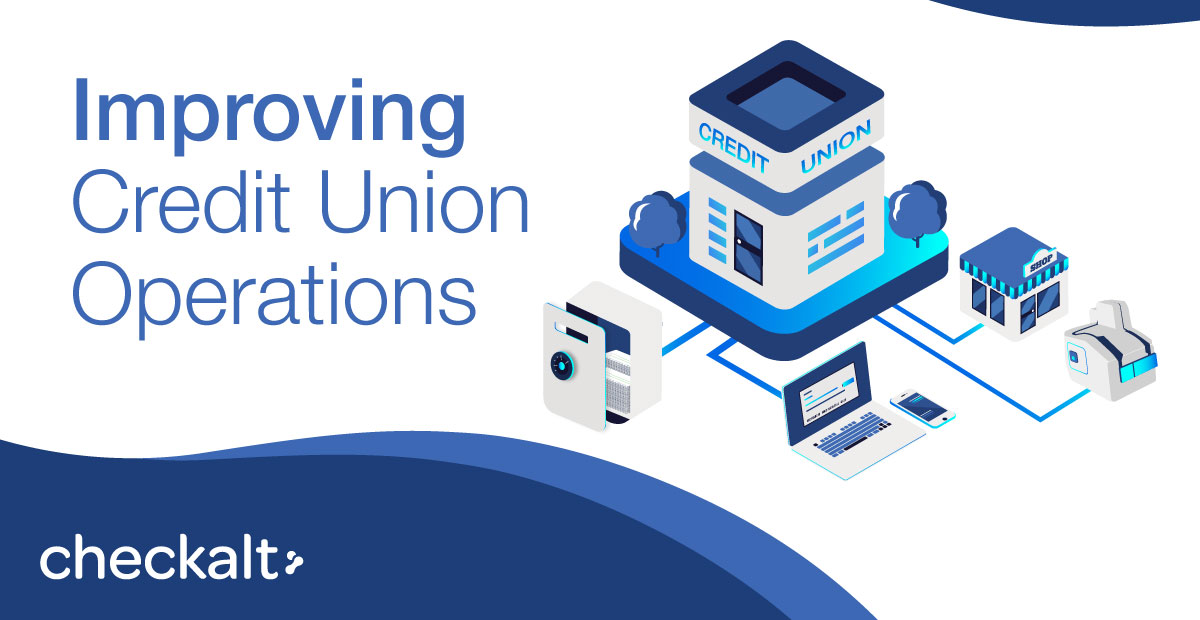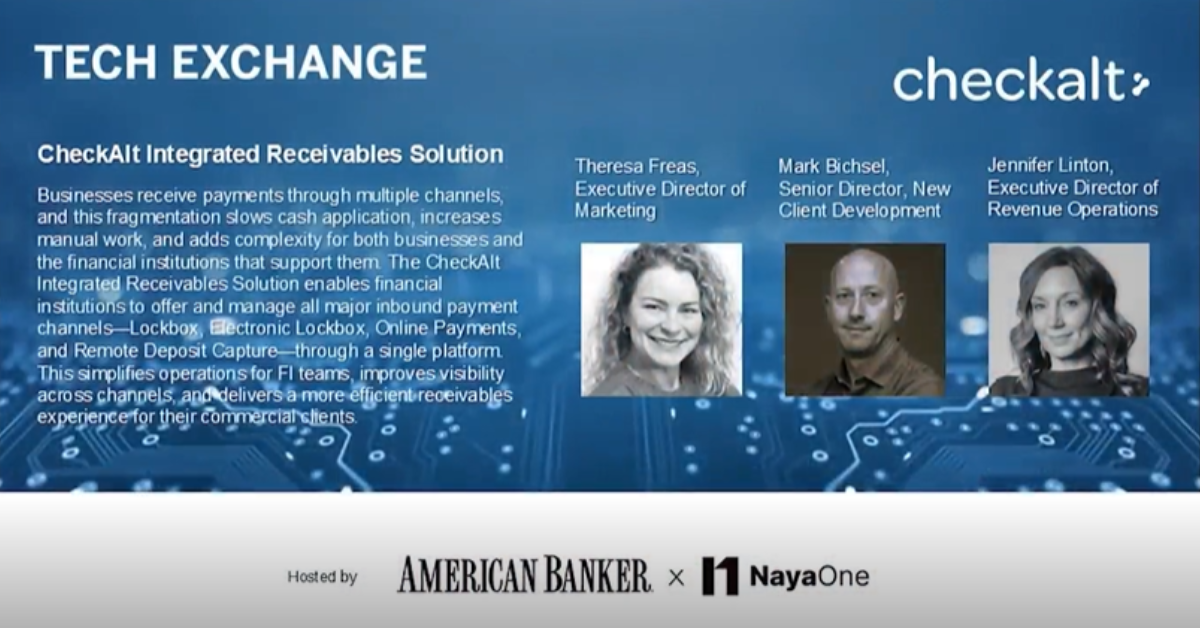The New USPS Postmark Rule: What It Means for Time-Sensitive Mailings
In today's fast-paced environment, organizations and individuals alike still rely on the U.S. Postal Service (USPS) to send and receive important...
4 min read

If you are a credit union leader, you might be stymied by contemplating the delivery of cost reductions while still satisfying member demands. You must also figure out the most important costs to tackle keeping in mind the unrelenting competition from other traditional credit unions and banks as well as new digital banks.
McKinsey & Company conducted a roundtable study comparing credit union’s efficiency ratios to banks. The results were eye-opening. Credit unions were systemically more inefficient compared to similarly-sized banks. Why? Either they spend more on operating costs and member services, or they are much less disciplined at controlling costs. The truth is probably a combination of both.
But let’s back up a moment because you need to make sure that you are choosing not just the right cost areas to improve your operational efficiency but also the most relevant operating costs. How do you do that?
A couple years ago, I wanted to improve my productivity. This idea came to me after changing my long-term career goal—my legacy. I started by listing all the things that would help me achieve my goal in 3-month, 1-year, and 3-year tactical steps. The idea was if I didn’t spend the bulk of my time working toward my legacy, then I wasn’t prioritizing properly. I knew that, in my day-to-day activities, there was a lot of wasted time. I had an idea what those activities were, but I didn’t really know.
So, I measured 31 activities on a time tracking app over a two-month period and averaged the results. Where I ended up spending my time was, unsurprisingly surprising! First, I realized that, on average, I was spending way too much time getting ready in the morning, cooking, eating, and exercising. Without going into too much detail, I came up with a list of ways to save time on those activities. And I wasn’t spending nearly enough time on the steps that would lead to my overall goal. I made sure to carve out at least three to four hours a day to work on that.
Secondly, there was the observer effect: measuring things changes them. Information collection can be the single most powerful tool to change anything. Want to get your financial life into shape? Measure everything you spend your money on. Want to lose 10 pounds? Measure everything you eat. And here’s the really cool thing: simply by virtue of the fact that you are measuring changes the outcome.
Here is a brief example of the observer effect. Let’s say you want your tellers to move faster when completing a particular task in a branch. You have a manager or co-worker time them. Besides coming up with ideas to make them more efficient, they are also going to move faster because you are timing them. They want to show that they are efficient. And after the observer effect has happened, the increased efficiency often remains. Employees can have fun with this, too. Give bonuses. Have contests. Bring the employees in on ideas to improve their work.
Back to operational efficiencies. To decide which operational costs to focus on you need to ascertain the following two things: tasks that are wasting the most time, and those that have the biggest effect on the bottom line. Highlighted in this article by Tim Reimink, Managing Director of accounting and consulting firm Crowe, is an excellent example of a large UK-based bank that mapped about 50 end-to-end processes (e.g., account closure and change of address), and the resulting transparency made clear that 15 of these processes accounted for roughly 80 percent of the overall cost base.”
With that in mind, here are five steps to get you started creating operational efficiency at your credit union.
I. Gather information. Like my own productivity study, a manager can time employees when they are working on a task with a clear process. How long does it take? This should be done over a period of at least a few weeks and across several employees to get a good average number. Once you are armed with your information, list the top 20 in order of time spent.
Look through your costs on your financial statements. Choose the most expensive processes. List the top 20 in order of costliest percentage of your overall operational costs. According to a McKinsey article, many financial institutions go through the work of using digitization, analytics, and artificial intelligence to deliver cost savings, only to find that they are such a small part of their operational cost that they barely make a dent in improving their overall numbers.
Choose the overlapping processes from your two lists of time spent and percentage of costs and start there. Ideally you want to come up with at least 10 areas to focus on.
II. Integration. Combine operational efficiency changes in an integrated way. Consider this advice from the same McKinsey article:
“Despite the transformational efforts by European and North American banks, their operational costs have on average remained mostly flat; with a few exceptions having achieved small reductions. Because they are not applying transformation levers across operations in a systematic way, banks are in effect winning battles, but losing the war. But there are a few banks that have identified a full range of levers and developed plans to apply them across all of their processes, putting them in position to achieve efficiency gains of 30 percent or more.”
III. Scalability.
Reimink’s article offers an excellent list for increasing operational efficiencies that is relevant for both banks and credit unions. He makes this interesting point about cost reductions: “The outcomes are not always realized through direct cost reductions. Ideally, improved efficiency means processes that are scalable and that support a faster pace of growth for the bank’s revenue stream and asset base than for its overhead costs.” In other words, think long-term. Scalability must be a component in your long-term strategy.
IV. Processes. In the same article, Reimink also notes that, “Reduction of processing costs involves continual performance monitoring and often comes about as a result of analyzing, mapping, benchmarking, and ultimately rethinking back-office processes. Important trends include greater reliance on electronic documents, automated routing and processing, and process automation driven by machine learning models.”
V. Technology. No list would be complete without incorporating the importance of technology and automation. In my article for CheckAlt, called Activating Data with Analytics, Artificial Intelligence to Improve the Banking Experience, I wrote that big data analytics (BDA) and artificial intelligence (AI) are about understanding patterns, predicting outcomes, and improving processes. These revelations can improve customer experiences as well as reduce costs for financial institutions in myriad ways.
It’s also important to note that while many big financial institutions have already adopted BDA and AI, credit unions and community banks can use efficiency-boosting technologies—often with little added investment.
Keep in mind that embarking on a cost savings strategy needs to include buy-in from everyone—top management to branch workers. Accountability is key, but if your plan incorporates transparency and a reward system, success will be more likely to follow. With that success, an important result will be the ability to provide better service for your members.

In today's fast-paced environment, organizations and individuals alike still rely on the U.S. Postal Service (USPS) to send and receive important...

Receivables are becoming harder to manage across separate systems. See how an integrated approach brings those channels together for a modern...

The Top 5 Most-Read Articles of the Year 2025 offered clear insight into what our audiences valued most: practical AI adoption, stronger fraud...